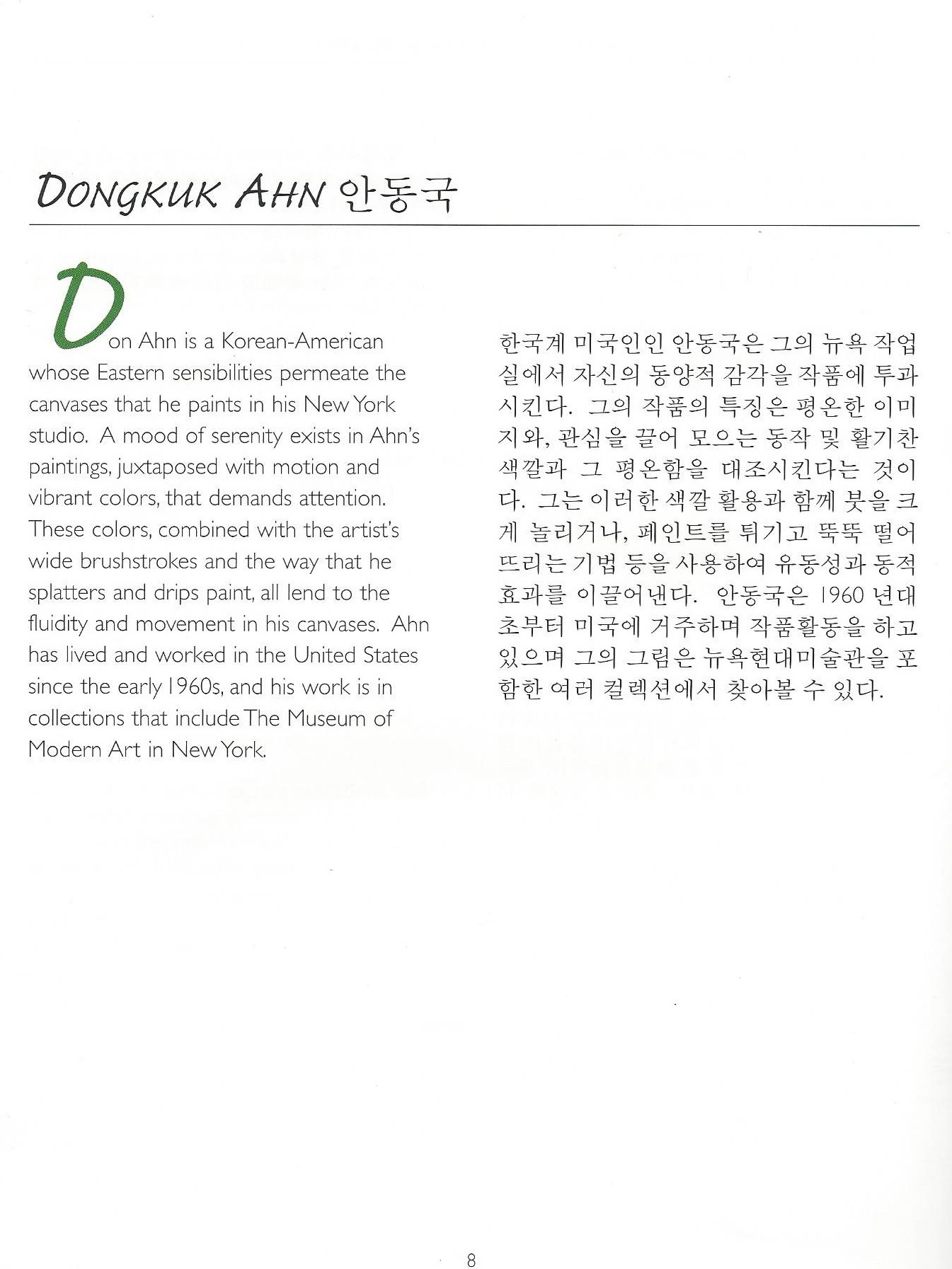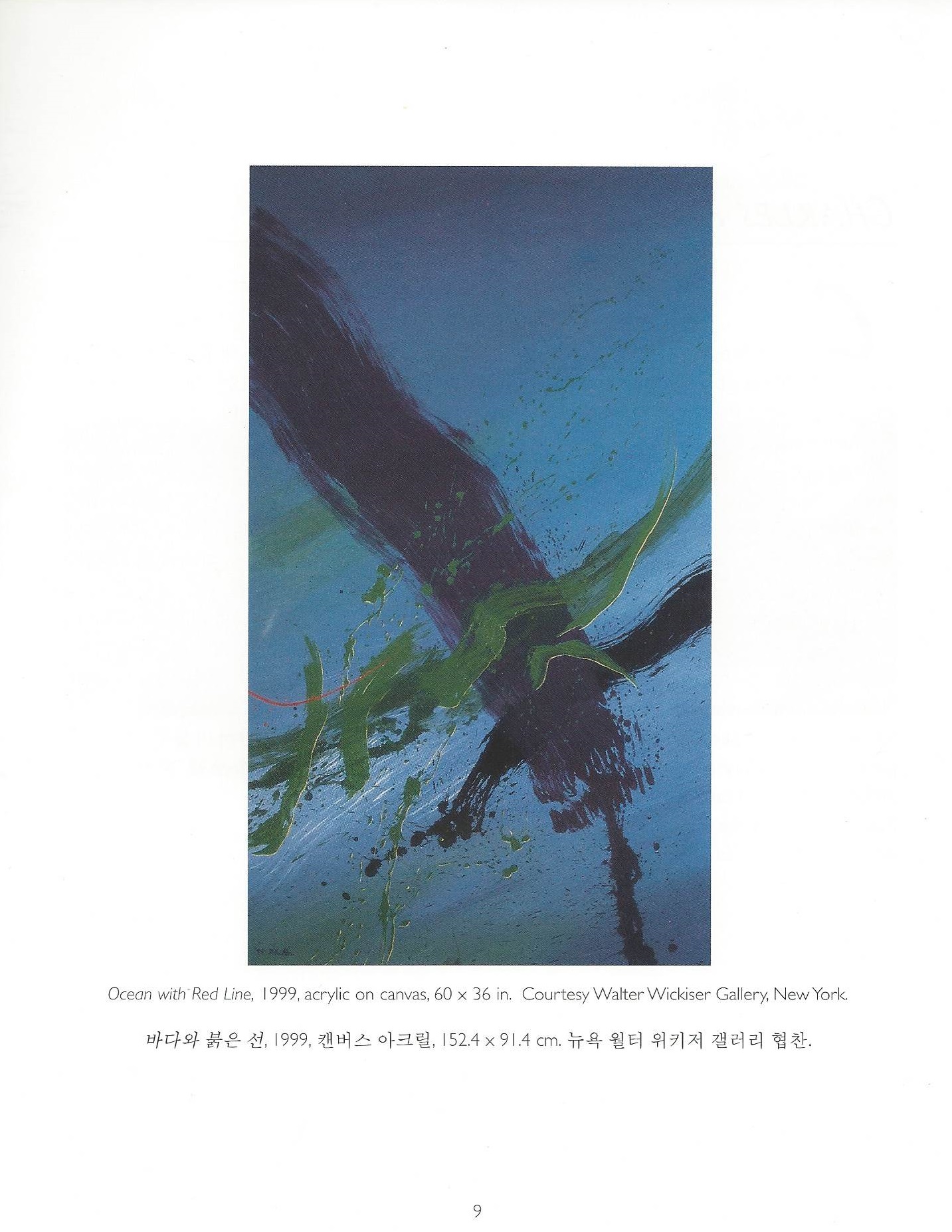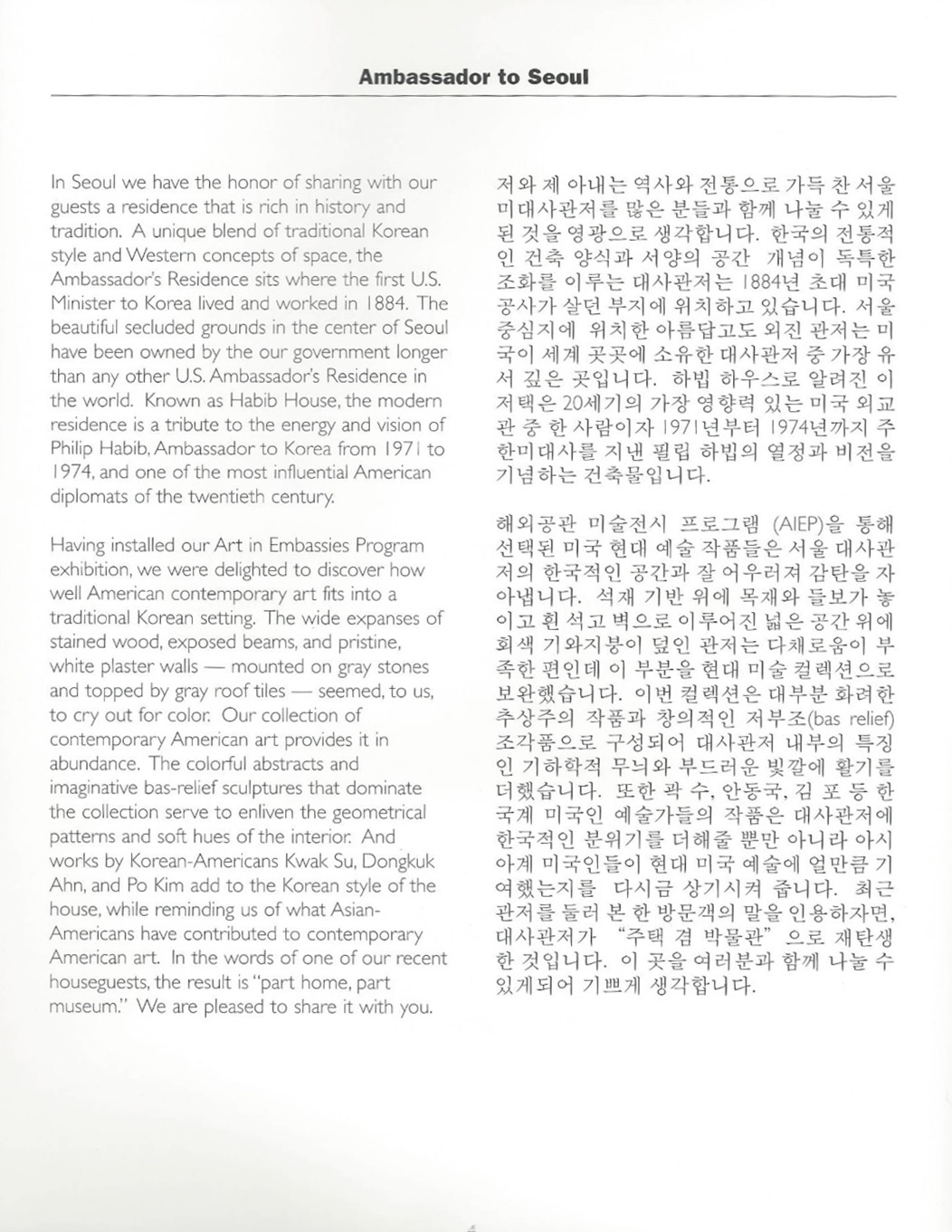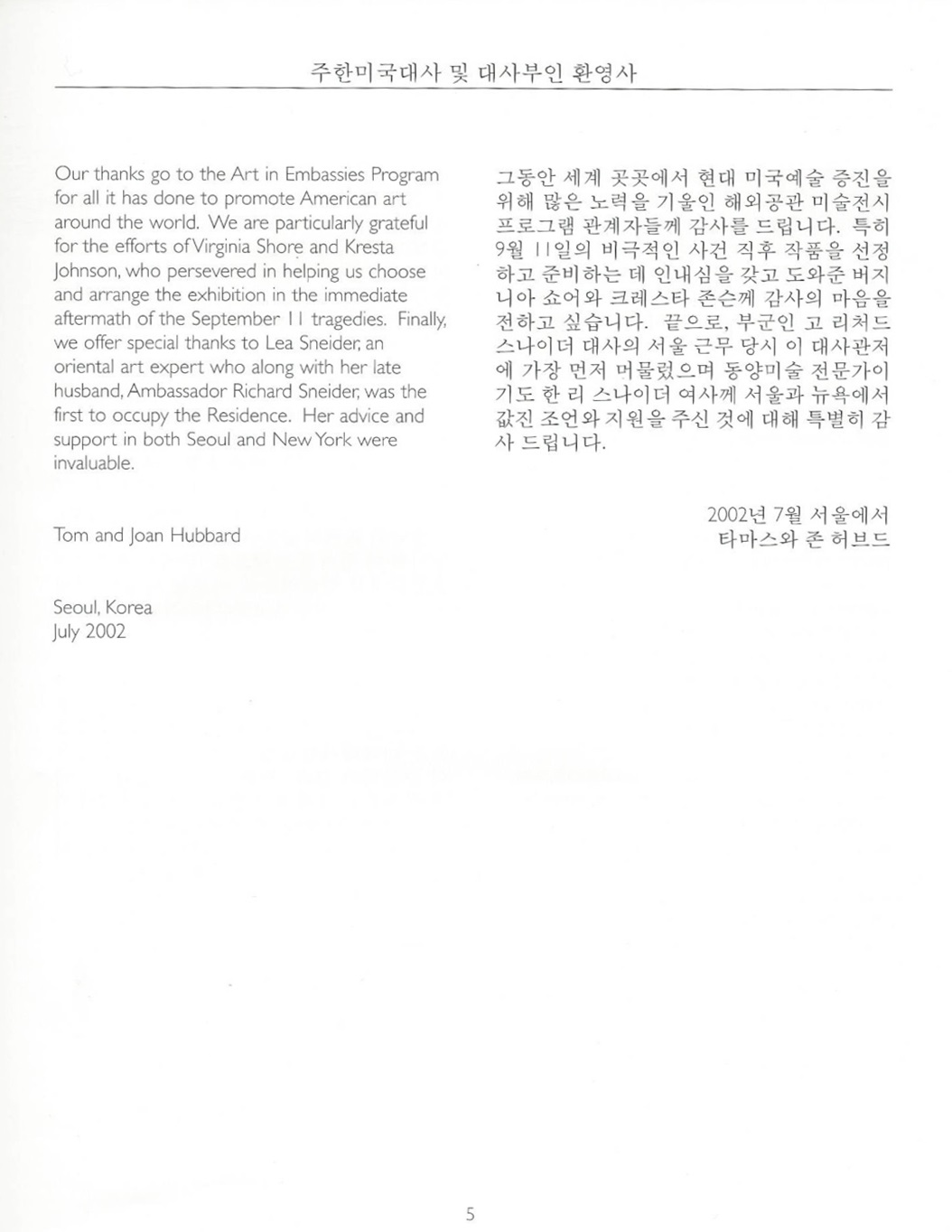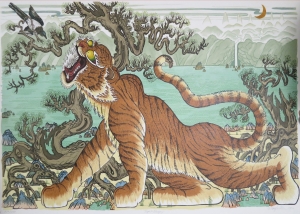Don Ahn is a Korean-American whose Eastern sensibilities permeate the canvases that he paints in his New York studio. A mood of serenity exists in Ahn’s paintings, juxtaposed with motion and vibrant colors, which demands attention. These colors, combined with the artist’s wide brushstrokes and the way that he splatters and drips paint, all lend to the fluidity and movement in his canvases. Ahn has lived and worked in the United States since the early 1960s, and his work is in collections that include The Museum of Modern Art in New York.
In Seoul we have the honor of sharing with our guests a residence that is rich in history and tradition. A unique blend of traditional Korean style and Western concepts of space, the Ambassador’s Residence sits where the first U.S. Minister to Korea lived and worked in 1884. The beautiful secluded grounds in the center of Seoul have been owned by our government longer than any other U.S. Ambassador’s Residence in the world. Known as Habib House, the modern residence is a tribute to the energy and vision of Philip Habib, Ambassador to Korea from 1971 to 1974, and one of the most influential American diplomats of the twentieth century.
Having installed our Art in Embassies Program exhibition, we were delighted to discover how well American contemporary art fits into a traditional Korean setting. The wide expanses of stained wood, exposed beams, and pristine, white plaster walls – mounted on gray stones and topped by gray roof tiles – seemed, to us, to cry out for color. Our collection of contemporary American art provides it in abundance. The colorful abstracts and imaginative bas-relief sculptures that dominate the collection serve to enliven the geometrical patterns and soft hues of the interior. And works by Korean-Americans Kwak Su, Dongkuk Ahn, and Po Kim add to the Korean style of the house, while remaining us of what Asian-Americans have contributed to contemporary American art. In the words of one of our recent houseguests, the result is “part home, part museum.” We are pleased to share it with you.
Our thanks go to the Art in Embassies Program for all it has done to promote American art around the world. We are particularly grateful for the efforts of Virginia Shore and Kresta Johnson, who persevered in helping us choose and arrange the exhibition in the immediate aftermath of the September II tragedies. Finally, we offer special thanks to Lea Sneider, an oriental art expert who along with her late husband, Ambassador Richard Sneider, was the first to occupy the Residence. Her advice and support in both Seoul and New York were invaluable.
Tom and Joan Hubbard
Seoul, Korea
July 2002

